Hyundai Ioniq 6 detailed with 610km of EV range ahead of 2023 Australian arrival
Hyundai’s new Ioniq 6 electric sedan will be able to cover up to 610km between charges and benefit from over-the-air software updates and Bluelink remote connectivity.
The most efficient Hyundai electric car to date – the Ioniq 6 uses as little as 14kWh of electricity per 100km and is claimed to be “optimised in every way to redefine electric mobility” – the Ioniq 6 is also the most advanced.
Set to muscle in on the market dominated by the Tesla Model 3 when it arrives in Australia in the first half of 2023, the Ioniq 6 has a radical design with an emphasis on aerodynamics. Its coefficient of drag is just 0.21, well below the 0.23 of the Tesla Model 3 and not far off the 0.20 of the Mercedes-Benz EQS that has the lowest drag coefficient of any current production car.
Hyundai refers to the Ioniq 6 as an “electrified streamliner”, the newcomer has a sleek body designed to reduce aerodynamic drag, in turn improving how far it can drive between charges.
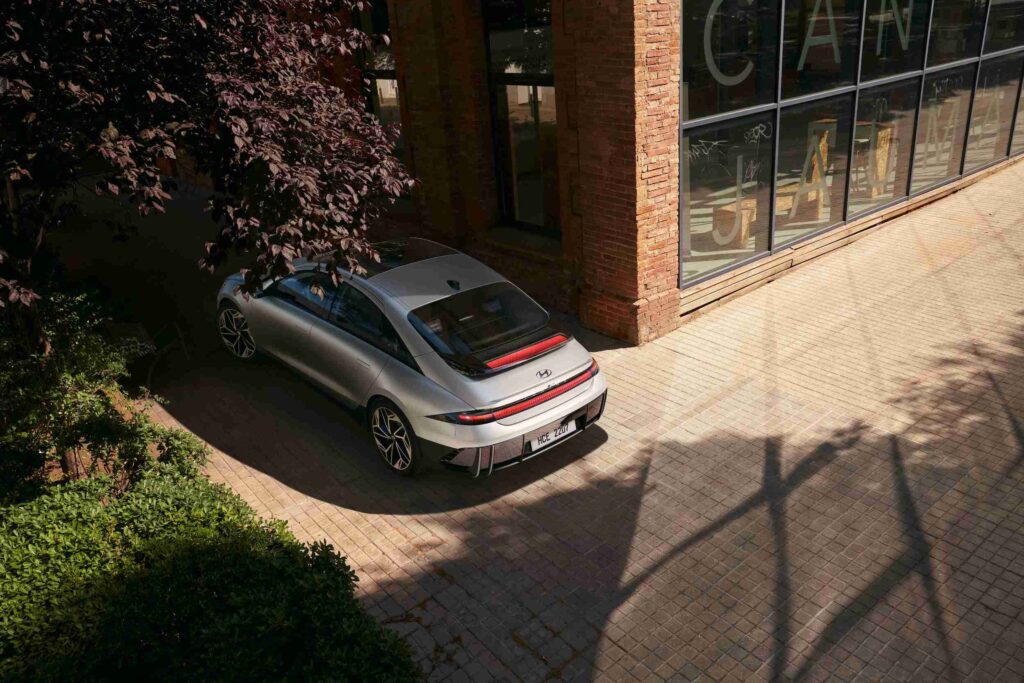
It rides on the E-GMP architecture that underpins the Ioniq 5 and Kia EV6 – as well as a raft of planned electric models from Hyundai and sister brand Kia.
“Ioniq 6 is the next ambitious step forward in Hyundai Motor’s strategy to accelerate its transition to electrification and into a position as a global leader in EVs,” said Hyundai president and CEO Jaehoon Chang.
“The Hyundai Ioniq 6 electtrified streamliner will provide a unique and distinctive experience for drivers and passengers, optimised in every way to redefine electric mobility.”
The Ioniq 6 is 4855mm long, 1880mm wide and 1495mm tall and has a cabin “developed to serve as a comfy and personalised hideaway”.
While its width is on par with EVs such as the Ioniq 5 and EV6, its 4855mm length is longer than most. It also rides on a relatively long wheelbase of 2950mm, which is 50mm shorter than that of the Ioniq 5.
It will be available with dual-colour ambient lighting that allows two different layers of lighting, each selected from a palette of 64 hues.
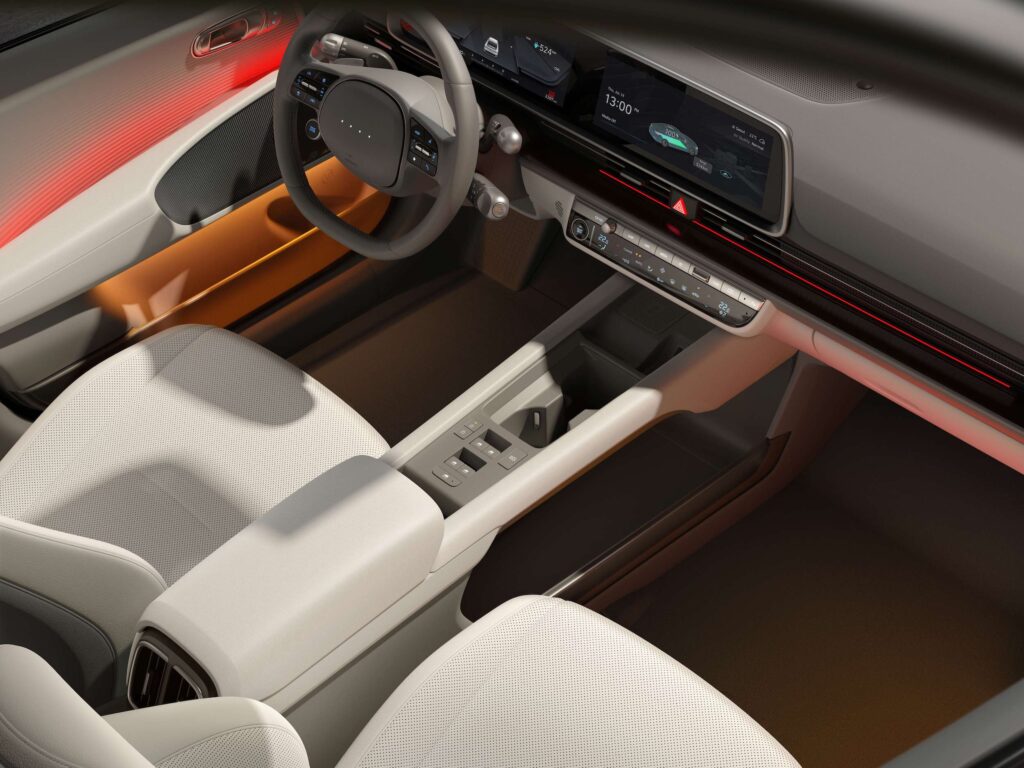
The Ioniq 6 is also the first Hyundai with over-the-air software updates, something pioneered by Tesla and slowly rolling out to other brands.
OTA updates allow for additional features or functionality to be added via regular software updates, similar to those performed on smartphones.
The Ioniq 6 will be available with a 77.4kWh battery driving either a single-motor, rear-wheel drive configuration or dual-motor all-wheel drive setup.
While the battery is slightly larger than the recently-updated Ioniq 5 – it’s the same battery capacity used in the EV6 – the electric motors appear identical.
Hyundai has only released outputs for the higher-powered AWD dual-motor configuration, which makes a combined 239kW and 605Nm. That’s enough to complete the 0-100km/h sprint in 5.1 seconds. No word on how much electricity that variant will consume.
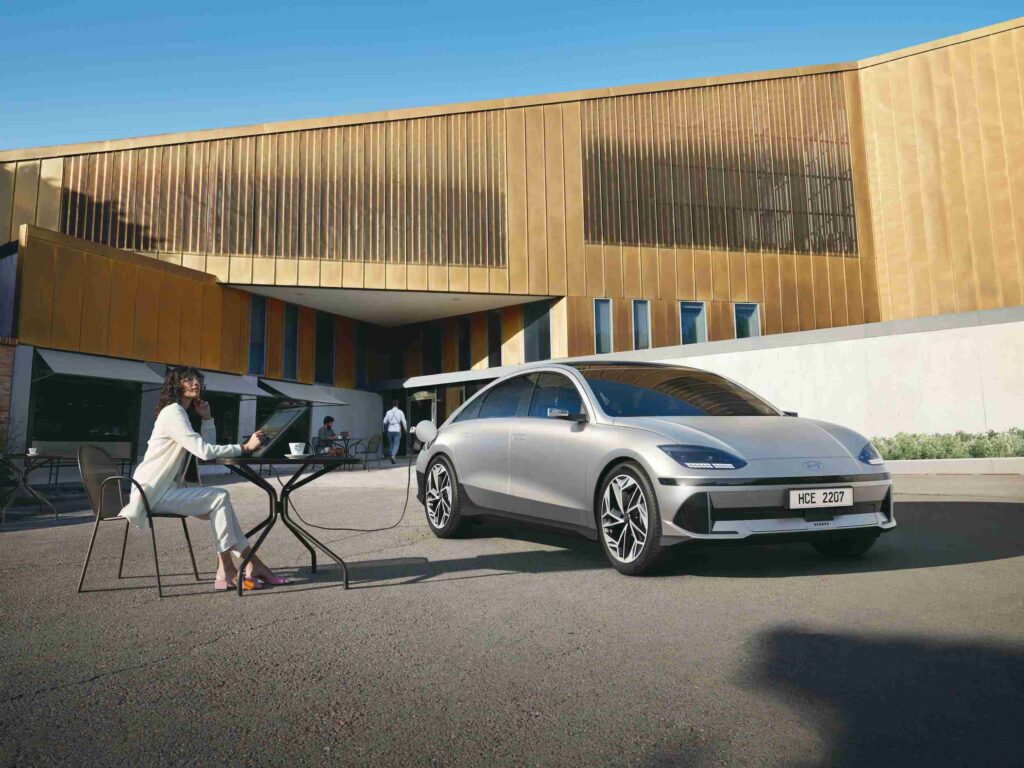
Instead, Hyundai has focused its efficiency story on the single-motor version using a smaller capacity (and, therefore, lighter) 53kWh battery pack. The company says that combination riding on 18-inch wheels (versus wheels of up to 20 inches on other variants) would use 14kWh/100km on the WLTP test cycle.
As with the Ioniq 5 and Kia EV6, the Ioniq 6 can be charged at 400V or 800V, the latter allowing it to benefit from faster charging available at ultra-rapid charging stations.
A 10-80 percent charge is claimed to take about 18 minutes.
The Ioniq 6 also gets a vehicle-to-load (V2L) function, which can provide power to external devices. The regular powerpoint can provide up to 3.6kW to work tools, camping gears or even for charging another EV.
Hyundai is also stepping up the driving customisation options with a system it calls EV Performance Tune-up.
It allows a wider range of adjustment for throttle sensitivity, steering feel and even how much power the motor/s produce.
There’s also a “spaceship-like sound” for the cabin. Hyundai refers to the customisable artificial motor sound as e-ASD, or electric active sound design.
Production of the Ioniq 6 starts in the third quarter of 2022 and Australian deliveries are due in the first half 2023. It’s set to be offered in a high specification, similar to the Ioniq 5. One addition will be the availability of cameras in lieu of exterior mirrors.
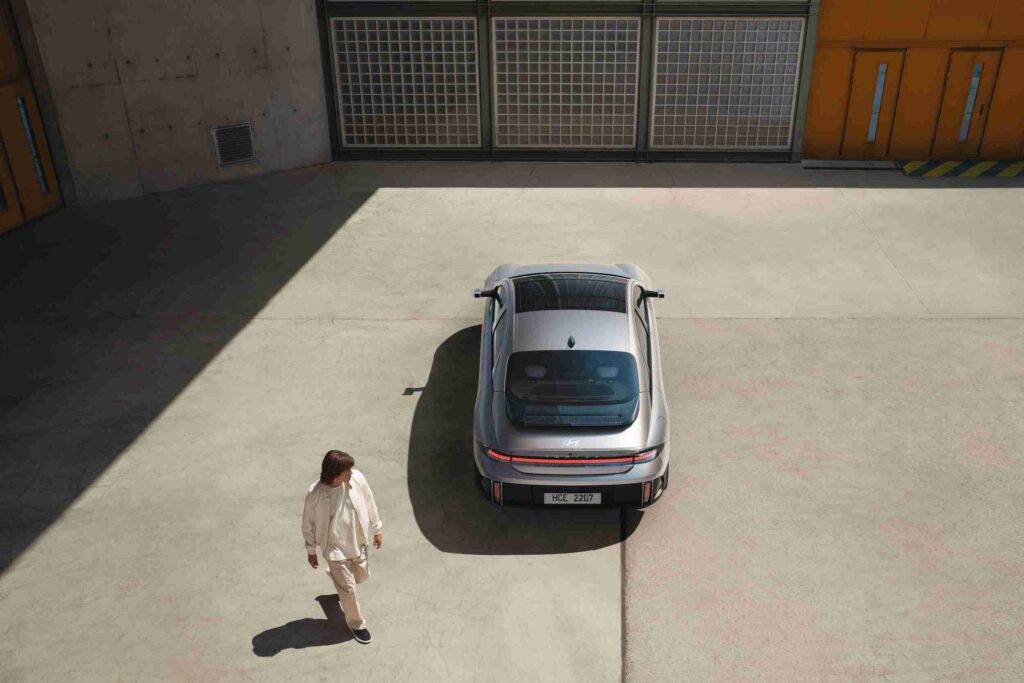
It’s not known how many will arrive here, although Hyundai suggests it will be in similar numbers to the Ioniq 5, something Hyundai concedes will lead to demand significantly exceeding supply. That means something like 500-600 cars per year; Hyundai and Kia still struggle to convince their head offices to divert many EVs down under.
As for the price, Hyundai says it’s expected to be similar to the pricing of the Ioniq 5. It kicks off at $69,900 plus on-road costs for the Dynamiq model and goes to $77,500 plus costs for the dual-motor Techniq. It will be sold directly from head office, meaning fixed prices – something that’s not such a bad thing in an era where some dealers are taking advantage of short supply by charging higher prices.
Unlike the Ioniq 5 – which used an overseas suspension tune – Hyundai says it will put the Ioniq 6 through a local tuning program designed to better prepare it for Australian tastes and conditions.

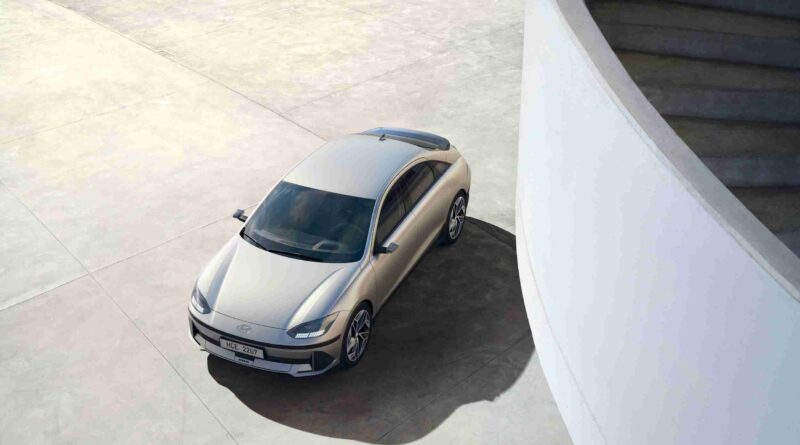
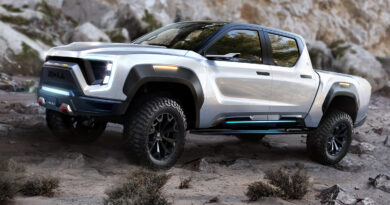
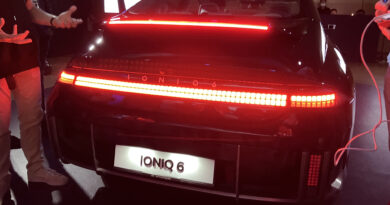
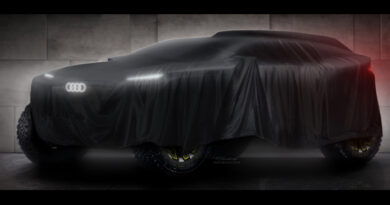
Am I the only one to think that they traced a 1990s Porsche 911 for the exterior styling?